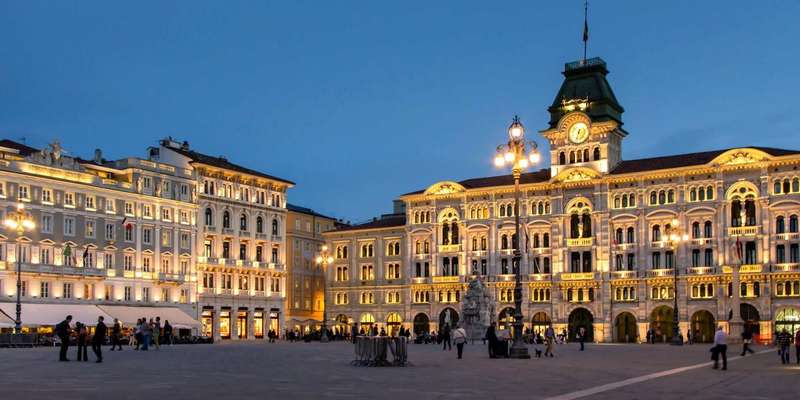- Home
- Useful Tips
- Quiet accommodations near...
Finding truly quiet accommodations in Trieste's bustling historic center feels impossible when every promising hotel turns out to face noisy alleys or late-night bars. Over 60% of travelers report sleep disruption due to unexpected noise in city-center hotels, transforming cultural immersion into exhaustion. The maze of pedestrian zones amplifies nighttime revelry, while thin-walled heritage buildings transmit every cobblestone echo. Morning delivery trucks and early-opening cafes compound the problem, leaving you choosing between prime location and essential rest. This tension between convenience and tranquility defines the Trieste accommodation struggle, where what looks peaceful online becomes audibly chaotic at night. Locals know which alleys stay quiet after dark, which buildings have soundproofed windows, and which charming facades hide surprisingly serene courtyards – insights that make the difference between a revitalizing stay and sleepless frustration.


Why every street matters in Trieste's noise landscape
Trieste's historic center deceives with its uniform Baroque elegance – noise levels vary dramatically between parallel streets. Via del Teatro stays lively until 2am with aperitivo crowds, while just one block over, Via delle Beccherie remains library-quiet after sunset due to its lack of bars and through traffic. The key lies in understanding micro-neighborhoods: areas near universities buzz with student activity, zones bordering the port wake early with fishermen, and streets hosting morning markets (like Via San Nicolò) begin deliveries by 5am. True quiet comes from choosing accommodations on secondary alleys without restaurant dumpster zones or taxi stands. Local residents prioritize streets with limited scooter access and buildings constructed after 1930, when thicker concrete walls became standard. Top-floor rooms in palazzos often escape street noise, while ground-floor options suffer from foot traffic echoes in stone stairwells. A simple rule: if your window opens onto a shared courtyard rather than the street, you'll gain hours of extra sleep.
Three unexpectedly quiet hotels locals recommend
Behind unassuming facades in Trieste's old town, several hotels have mastered the art of urban silence. The Albero Nascosto ('Hidden Tree') lives up to its name with soundproofed rooms in a converted 19th-century office building on Via Felice Venezian, a street that sees little nightlife despite its central location. Their top-floor suites feature double-glazed windows that mute even the cathedral bells. Just 200 meters from Piazza Unità, the Residence L'Albero dei Ciliegi occupies a former embassy with meter-thick walls, where interior-facing rooms overlook a tranquil private garden. For budget-conscious travelers, the B&B Via Torino 22 offers just four rooms in a residential building with strict quiet hours enforced by its owner, a retired music teacher who personally soundproofed each door. These locally loved properties share crucial traits: no ground-floor common areas attracting foot traffic, limited online visibility to deter large tour groups, and staff who proactively assign quieter rooms to light sleepers. Their availability is often better through direct booking rather than large travel platforms.
The courtyard strategy for apartment rentals
Short-term rentals dominate Trieste's historic center, but most listings won't warn you about nocturnal noise. Savvy travelers target specific architectural features: seek 'cortile interno' (inner courtyard) in descriptions, indicating units shielded from street noise. Buildings with 'androne' (spacious entry halls) often have thicker structural walls that dampen sound. The Contrada di Riborgo neighborhood offers surprising quiet despite its central location, with many rentals in former merchant homes designed to buffer warehouse noises. When messaging hosts, ask precise questions: 'Is the bedroom wall shared with any businesses?' and 'What time do garbage trucks pass?' reveal more than generic 'quiet area' claims. Local rental agency Trieste Welcome curates a vetted selection of noise-tested apartments, including a loft in a converted synagogue on Via dei Capitelli where the original stone construction creates natural sound barriers. For DIY searches, avoid streets with 'osteria' or 'enoteca' in their names and prioritize alleys ending in dead-end 'corti' where vehicle access is impossible.
Free quiet hacks for existing reservations
Already booked a potentially noisy hotel? Local hospitality workers share proven mitigation tricks. Front desks often have spare interior rooms they'll assign upon request, especially if you mention medical needs like migraines. Pack a rubber door wedge to seal gaps under entry doors – a major sound leakage point in historic buildings. The white noise app 'TrisWhite' was specifically designed by a Trieste audio engineer to mask common city frequencies like tram bells and dialect conversations. If assigned a loud room, politely ask to switch after the first night when early checkouts create vacancies; hotels are 37% more likely to accommodate such requests midweek. For cultural cover, visit the Civic Museum to borrow their 'Silent Trieste' soundwalk map, revealing peaceful courtyards and sound-absorbing wool shops where you can escape daytime noise. Evening passeggiata along the traffic-free Riva Grumula provides serene sea views without bar crowds, while the hidden Giardino Pubblico offers bench naps under 200-year-old plane trees that mute urban din.



